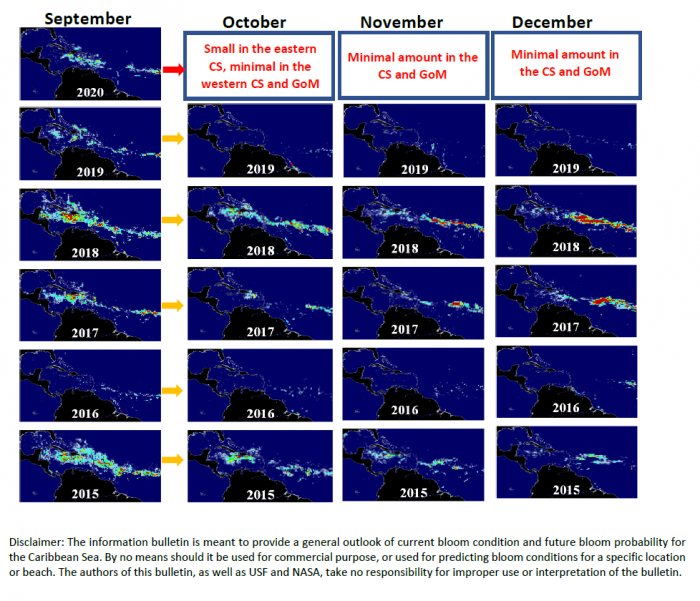The maps below show Sargassum abundance, with warm colors representing high abundance.

In September 2020, the overall Sargassum amount further decreased across most of the central Atlantic. Moderate amount was still observed in the Central West Atlantic (CWA, i.e., the region east of the Lesser Antilles in the maps below) and most of the eastern Caribbean Sea (CS). In contrast, the following regions are almost free of Sargassum mats: western CS, Gulf of Mexico (GoM), Florida Straits, and east coast of Florida. In all regions combined, the total Sargassum amount decreased from 4.2 M metric tons in August to 3.5 M tons in September, lower than September 2015, 2017, and 2018. However, unprecedented large amount of Sargassum appeared in the Central East Atlantic along the west Africa coast from The Gambia to Liberia (not shown in the maps below).
Looking ahead, the eastern Caribbean will continue experiencing small amount of Sargassum in October. The rest of the Caribbean as well as the following regions will be pretty much free of large Sargassum mats for the next few months, possibly through winter: GoM, Florida Straits, and east coast of Florida. It is currently unknown how the record-high Sargassum amount along the west Africa may change in the coming months, but we will keep a close eye on this region.
More updates will be provided by the end of October 2020, and more information and imagery can be found from the Sargassum Watch System (SaWS, https://optics.marine.usf.edu/projects/saws.html)


